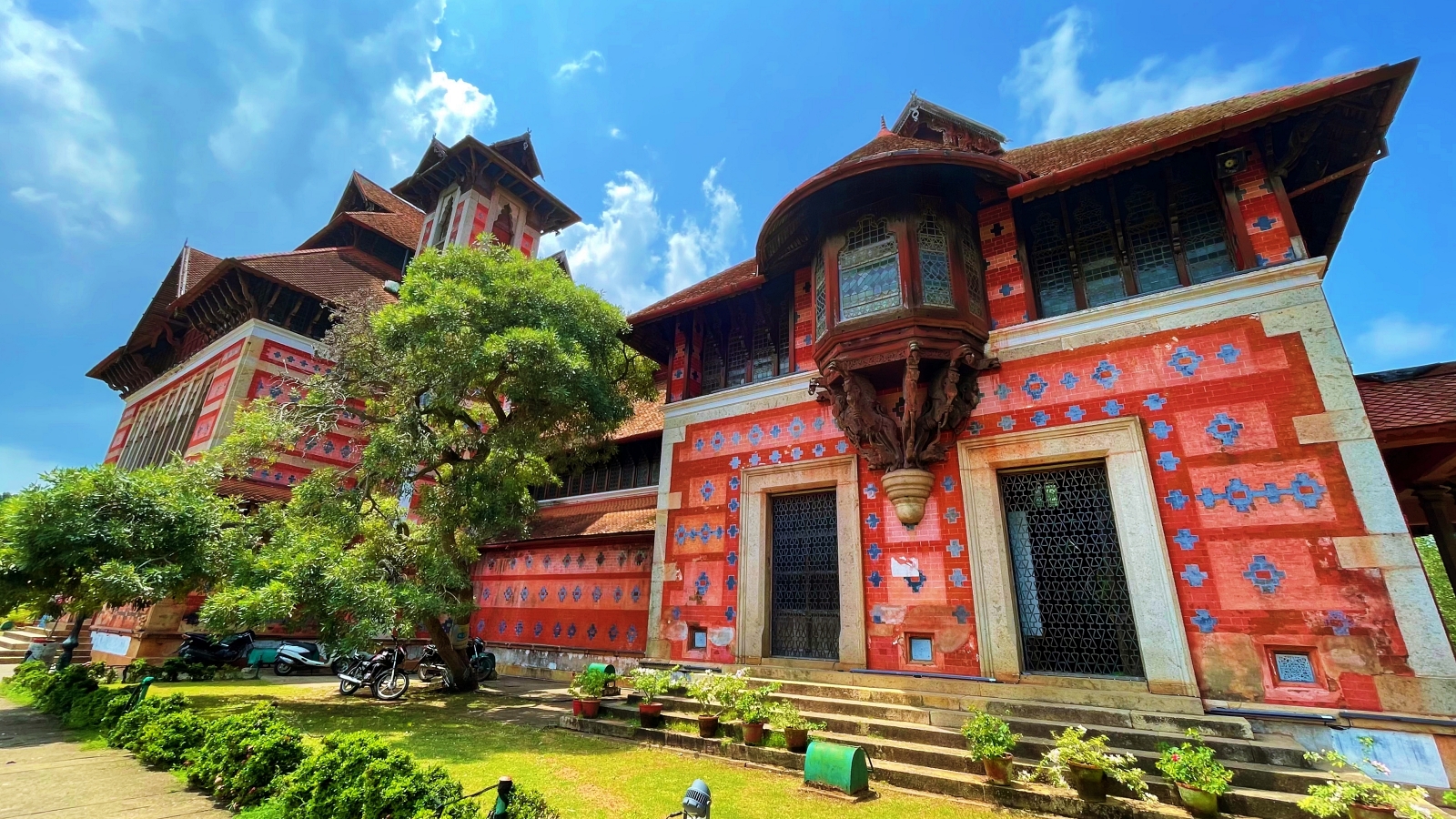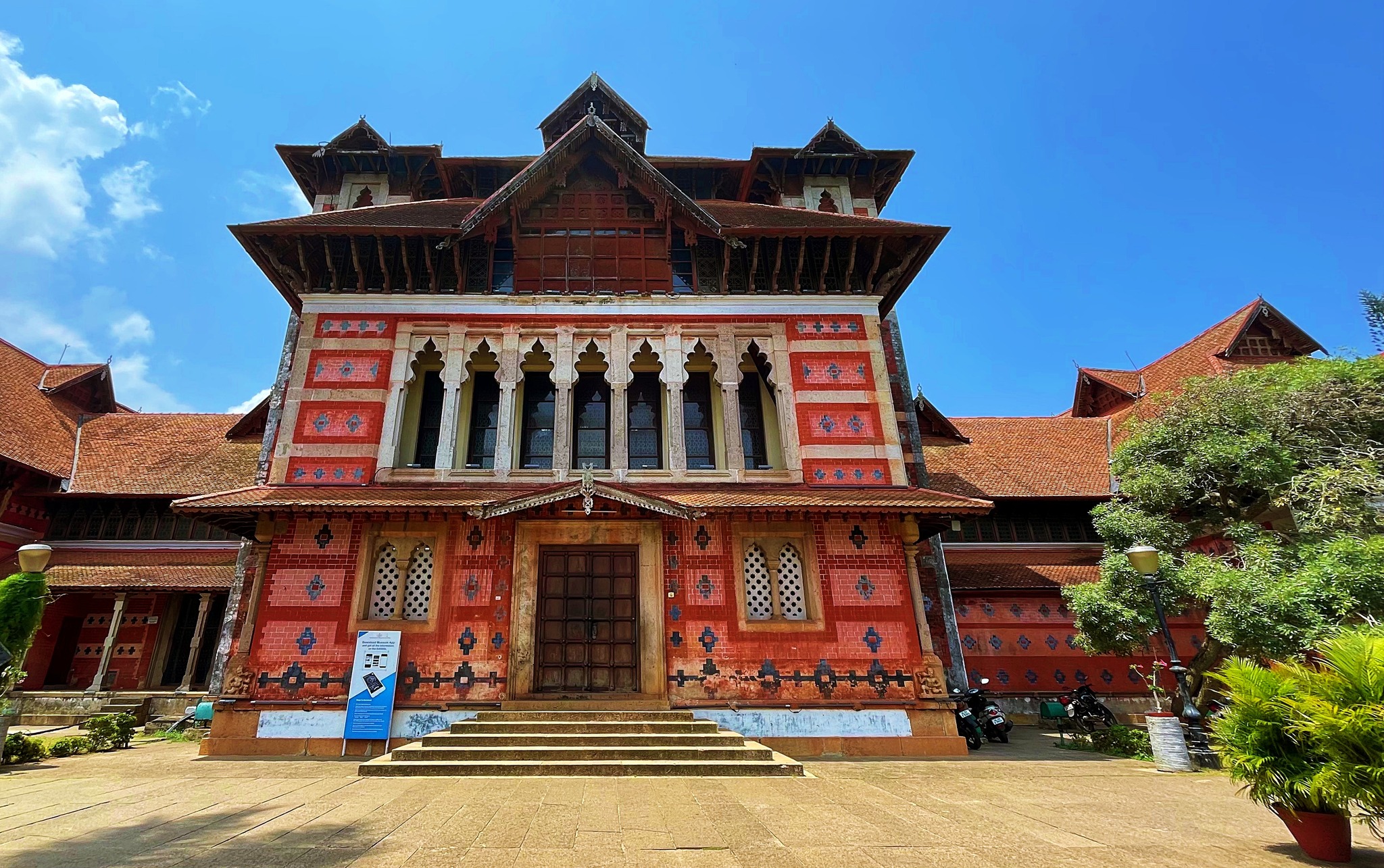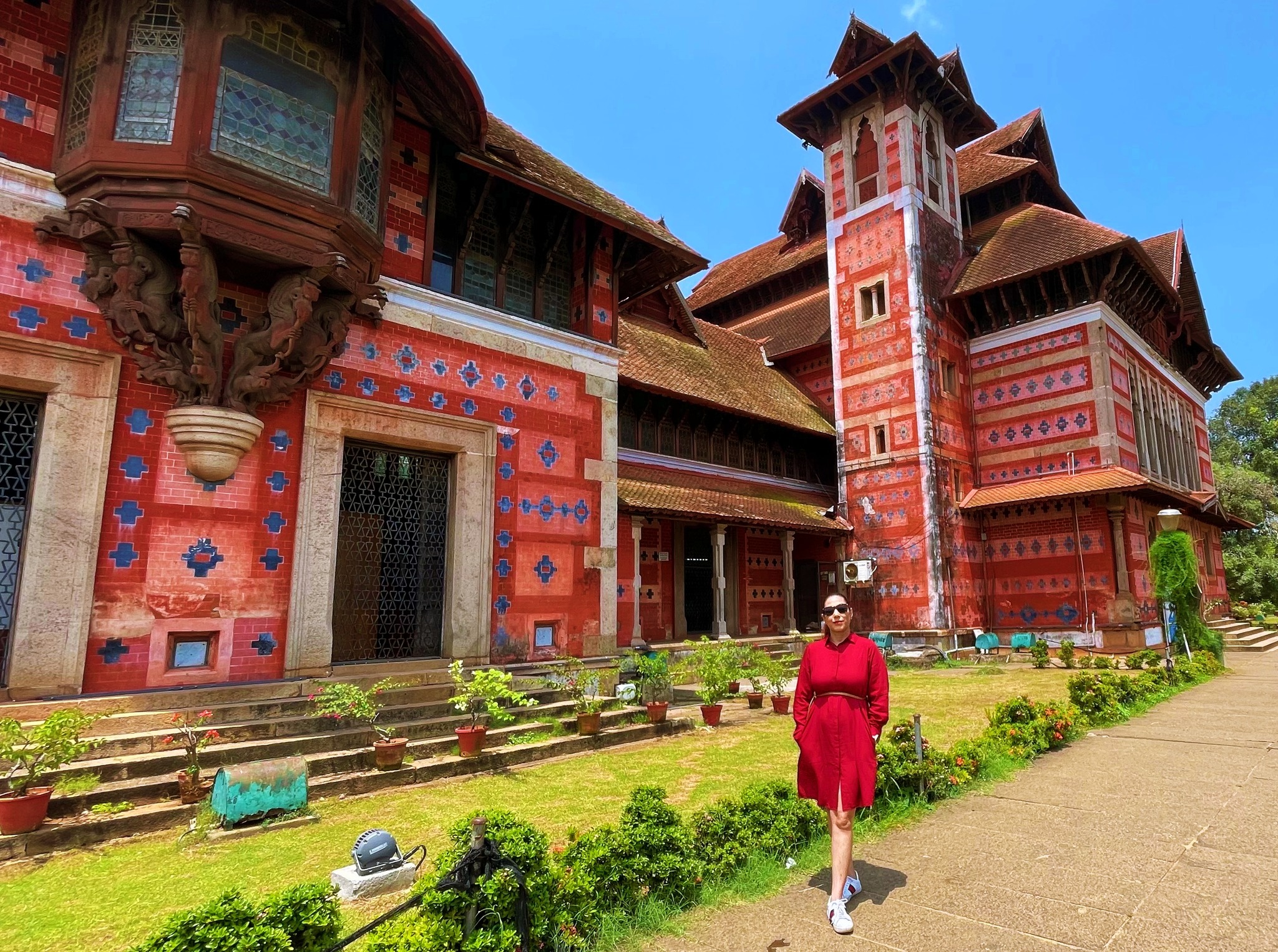Napier Museum – A Gothic Masterpiece with Natural Ventilation
Dating back to the 18th century, the Napier Museum in Trivandrum is a must-see for anyone with a penchant for cultural history and design.
Looking to dive deep into the architectural wonders of Kerala? Look no further than the Napier Museum! This gem was named after Lord Napier, the governor-general of Madras province, who was absolutely blown away by Kerala’s unique architectural style. So am I and so I knew I had to add the Napier Museum to my itinerary during my recent stay in Thiruvananthapuram. This masterpiece was designed by the talented architect Robert Fellowes Chisholm and was opened to the public in 1880 by Ayilyam Thirunal Maharaja of Travancore.

Chisholm was an advocate of native art and made sure to incorporate it into the design of the structure. He even went so far as to study Kerala architecture in great detail before taking on the project. So, if you’re looking to soak up some serious architectural knowledge while basking in the beauty of Kerala, the Napier Museum is the place to be. Nestled on a sprawling 55-acre plot of land, this site boasts one of India’s oldest zoological gardens – the Trivandrum Zoo since 1857.

The museum’s garden is a sight to behold with a variety of trees and flowers that will make your heart skip a beat. And get this – the oldest rubber tree in Kerala is chillin’ there, brought all the way from Ceylon in 1876 and planted by the one and only Visakham Thirunal. It’s like a living piece of history right in the museum’s backyard. As you make your way through the lush greenery, you’ll come across a striking red-and-white building with a Gothic roof. Upon setting foot on the premises, I was immediately awestruck by the stunning architecture of the building. The Indo-Saracenic style, with its intricate details and ornate carvings, was a feast for the eyes.

My curiosity was piqued, and I eagerly anticipated the treasures that awaited me within. This beauty was built back in 1855 and now houses a vast range of art and natural history exhibits. I was particularly drawn to the museum’s unique architectural design, which incorporates elements from Indian, Chinese, Kerala, and Mughal schools of architecture to create a one-of-a-kind structure. And let’s not forget about the museum’s natural air-conditioning system, thanks to its Indo-Saracenic style. It’s like stepping into a cool oasis on a hot summer day. But the real treasure lies within the walls of this architectural masterpiece.
The museum boasts a stunning collection of ancient artefacts and exquisite artwork that truly showcases India’s rich cultural heritage. It’s like taking a trip back in time but with air conditioning and no time machine required. So, if you’re looking for a little bit of history, culture, and a whole lot of architectural eye candy, then Napier Museum should definitely be on your bucket list. This Gothic masterpiece boasts a collection of artistic, cultural, and antique objects that will make your head spin. From bronze idols to ancient coins, wood carvings to stone sculptures, and even a temple chariot, palanquin and ivory carvings, this museum has got it all.
As you step inside, you’ll feel like you’ve been transported back in time to the era of the British Raj. It’s like a time machine but without all the complicated science stuff. You’ll get a unique opportunity to explore the rich cultural heritage of India and gain a deeper understanding of its fascinating past. The museum also showcases Indian epics like Mahabharata and Ramayana, depicted using Japanese shadow-play leather. It’s like a cultural mashup that will blow your mind. As I sauntered through the museum’s hallowed halls, my first stop was the Natural History section.
A cornucopia of preserved creatures, from majestic elephants to delicate butterflies, all on display for my viewing pleasure. The butterfly collection was especially noteworthy, boasting specimens from every corner of the globe. Onward I ventured to the Art section, where I was greeted by a dazzling array of Ravi Verma’s paintings, sculptures, and artefacts. The pièce de résistance? A collection of ancient bronze idols, so exquisitely crafted that I couldn’t help but marvel at their beauty. Each idol was displayed with the utmost care as if they were royalty themselves. The museum was a veritable feast for the senses.
As well, the Ethnography section of the museum was an absolute delight. The displays showcase the dresses, jewellery, and lifestyle of the locals. But what really caught my attention were the recreated models of traditional homes. It was like peeking into a time capsule and getting a glimpse of the everyday lives of the people who once lived in them. The museum also boasts an impressive ancient coin collection with over 5,000 pieces.
Visitors can also explore the adjacent Natural History Museum, which features skeletons of birds and animals, as well as taxidermy galleries. And for the art lovers out there, the Shri Chitra Art Gallery is a must-see. Last but not least, the Thiruvananthapuram Zoo is just a hop, skip, and jump away. I was absolutely floored by the meticulous attention to detail that went into curating each exhibit. Every single piece was displayed with such precision and care, and the information provided was both informative and downright captivating. The museum’s vast collection and stunning architecture make it an absolute must-see for anyone who finds themselves in Thiruvananthapuram.
Despite the lack of an air conditioning system, the Indo-Saracenic structure has never had any issues with ventilation. It’s like a natural breeze that just knows how to flow through the place. And let’s not forget about the bandstand – it’s got some serious hidden speakers and acoustics that used to be the go-to spot for the Travancore Nair Brigade band’s Friday night performances. So, if you’re looking for a place to soak up some culture, history, and fresh air, this museum is the spot for you.
Timings: 10.00 am – 4.45 pm. It is open from 10 am to 4.45 pm on all days, except Mondays and Wednesdays.



